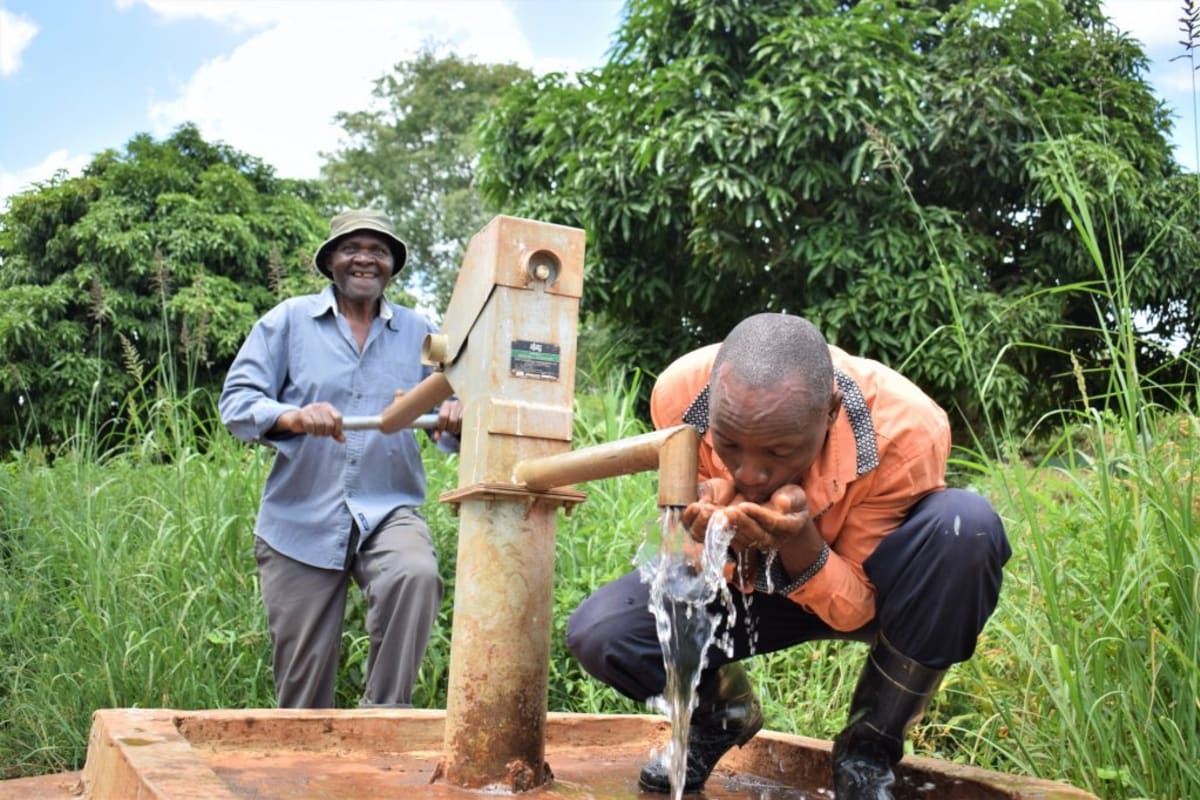This is home for Kikaka Self-Help Group, which aims to help Kitandini, Kaliani, and numerous other villages in this area of Kenya. The group is comprised of farmers who believe that if they work together to address food and water scarcity in their area, they'll grow stronger. This is Kikaka Self-Help Group's first year in partnering with us, and they look forward to having a huge impact on this region.
This area is quite a drive from our main office. It's 133 kilometers of easy driving on a highway through Wote Town, but then it gets difficult: 44 kilometers on bumpy, hilly Murram Road.
It is a rural, peaceful area. Most of the households dotting the terrain are made of brick walls and dirt floors.
Most of our baseline survey was conducted indoors since it started raining right when we arrived. A community member invited us into their home to talk, and it was very comfortable until it poured so hard that the roof started to leak!
Kikaka Self-Help Group and their neighbors make up a relatively young community, with over half of the population under 18. The average family has six members who rely on agriculture to earn a living.
Unfortunately, there are high rates of poverty here, resulting in malnutrition exacerbated by erratic weather, rising prices, and food production challenges. Many men move to other areas of Kenya in search of a better living, often just doing manual labor on more successful farms.
Each day begins early with children preparing for school and adults taking livestock out to graze. The rest of the day is spent on the farm.
There's a total of almost 4,600 people living in this region, who are part of 979 different households. While this many people may have access on any given day, realistically a single water source can only support a population of 350-500 people. That's why we continue to work in the same region over a number of years.
To learn more, click here.
Water Situation
The main source of water for communities in this region is the Kinze River. This area is so dry that this river often looks like a sandy riverbed; community members have to dig holes to get the water underneath.
The trek to this water source is about five kilometers, so community members bring a donkey to help bear the heavy water containers. Since a donkey can carry four 20-liter jerrycans at once, this can cut down the number of trips a family has to take if they strictly ration.
Because they're entirely out in the open, these scoop holes are contaminated. Animals are free to come and go, and rainwater washes dirt, fertilizers, feces, and so many other things into the water.
When delivered home, this water is poured into larger drums of 200 liters or greater.
We found that only one household bothers to treat its water; some believe that this water is safe, or others say that water treatment is just too time-consuming. Group members are aware that dirty water can result in sickness, but they seem resigned to their fate.
"Our children and community members have suffered a lot because of the water problem in this area. We hope that the implementation of this project will make things better," Mr. Mwakavi Kimeu said.
Sanitation Situation
More than 80% of households have a pit latrine. Most of them are made of mud. In the particular households we were meeting, there were a lot of holes in the wall that compromise the user's privacy. The family members admit that they try and wait until there's nobody around.
From what we saw, this community needs to develop in the areas of water treatment, garbage disposal, and pit latrine cleanliness.
What we can do:
Training
To address gaps in hygiene and sanitation practices, training will be offered to self-help group members and their neighbors. The members will learn about useful practices and tools to improve health, and then will be able to share those with all of the community members who couldn't make it to training. Water transport, storage, and treatment methods will be taught, and hand-washing will be a focus. Group members will learn how to make their own hand-washing stations with everyday materials. To motivate participants, we must show the links between these activities and their health.
Hand-Dug Well
This particular hand-dug well is being built adjacent to this group’s ongoing sand dam project (click here to see), which will supply clean drinking water once it rains. We have supplied the group with the tools needed for excavation. With the guidance of our artisans and mechanics, the excavated well will be cased, sealed with a well pad, and then finished with a new AfriDev pump.
Excavation takes a month or more on average, depending on the nature of the rock beneath. Construction of the well lining and installation of the pump takes 12 days maximum. The well will be lined with a concrete wall including perforations so that once it rains, water will filter in from the sand dam.
This well will be located in Kitandini Village, and will bring clean water closer to families having to walk long distances for their water.
This project is a part of our shared program with Africa Sand Dam Foundation (ASDF). Our team is pleased to provide the reports for this project (edited for clarity) thanks to the hard work of our friends in Kenya.

 Protected Dug Well
Protected Dug Well
 Rehabilitation Project
Rehabilitation Project



























